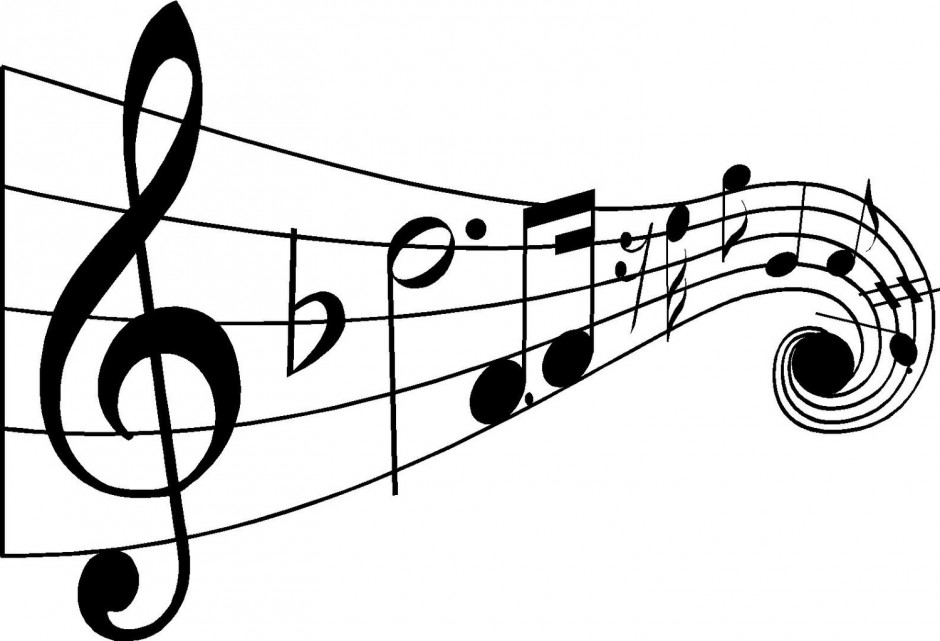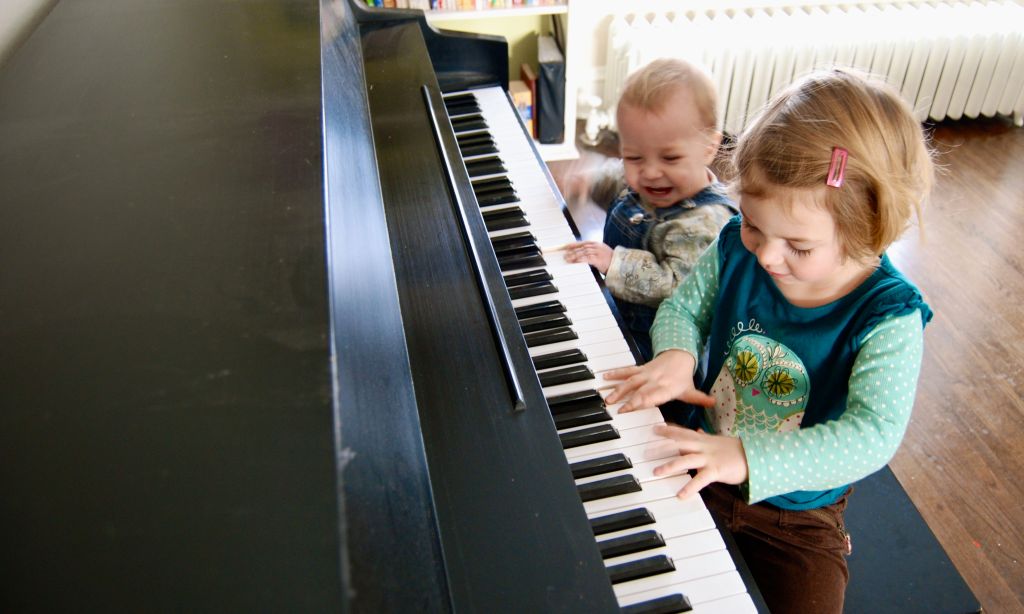Jazz and Classical Music at Home
/
Music Together LLC shared some wonderful articles on their Facebook page about enjoying Jazz and Classical music with your children. Both articles are talk about using books or stories to help engage your child in the music. I used most of the books listed in the jazz article with my students when I taught public school general music and have also enjoyed reading them to my own children so I can tell you from experience that these stories greatly enhance learning about great jazz musicians and their music. The article on classical music talks about the family telling their children what the music they are listening to is about. This is something my husband (who also has a degree in music) is great at doing with with our children. My daughters will now ask me when we are listening to classical music what it is about. If we don't know the exact storyline we enjoy making up our own story about what the music could be about. It is a great car ride activity!

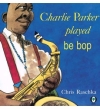 Charlie Parker Played Be Bop by Chris Raschka. A fun read aloud, with words and rhythm that give kids a sense of be bop: “Charlie Parker played be bop. / Charlie Parker played saxophone. / The music sounded like be bop. / Never leave your cat alone.” Raschka’s wonderful illustrations have movement that matches the words. Ages 0+
Charlie Parker Played Be Bop by Chris Raschka. A fun read aloud, with words and rhythm that give kids a sense of be bop: “Charlie Parker played be bop. / Charlie Parker played saxophone. / The music sounded like be bop. / Never leave your cat alone.” Raschka’s wonderful illustrations have movement that matches the words. Ages 0+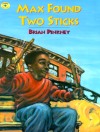 Max Found Two Sticks by Brian Pinkney. Max (not Roach) imitates the sounds he hears in his neighborhood with his sticks. This wonderful, simple story shows kids that music can be found anywhere. Max creates music by pounding out rhythms on his thighs, a bucket, hat boxes, and more. Ages 2+
Max Found Two Sticks by Brian Pinkney. Max (not Roach) imitates the sounds he hears in his neighborhood with his sticks. This wonderful, simple story shows kids that music can be found anywhere. Max creates music by pounding out rhythms on his thighs, a bucket, hat boxes, and more. Ages 2+ Ben’s Trumpet by Rachel Isadora. A sweet story about a young boy Ben who enjoys listening to jazz music and pretending to play the jazz trumpet. Ben frequently stops by the Zig Zag Jazz Club to listen to the musicians practice. One day the jazz trumpeter at the Zig Zag Jazz Club offers Ben encouragement and a special gift. Ages 3+
Ben’s Trumpet by Rachel Isadora. A sweet story about a young boy Ben who enjoys listening to jazz music and pretending to play the jazz trumpet. Ben frequently stops by the Zig Zag Jazz Club to listen to the musicians practice. One day the jazz trumpeter at the Zig Zag Jazz Club offers Ben encouragement and a special gift. Ages 3+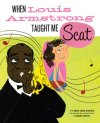 When Louis Armstrong Taught Me Scat by Muriel Harris Weinstein and R. Gregory Christie. A very fun story to introduce kids to Louis Armstrong and to scat. My kids love the silly bubble gum scat rhyme. The bold illustrations and bubble gum scat make this book a wonderful read aloud. Ages 3+
When Louis Armstrong Taught Me Scat by Muriel Harris Weinstein and R. Gregory Christie. A very fun story to introduce kids to Louis Armstrong and to scat. My kids love the silly bubble gum scat rhyme. The bold illustrations and bubble gum scat make this book a wonderful read aloud. Ages 3+ The Jazz Fly by Matthew Gollub and Karen Hanke. I did not appreciate this book until I read it with the accompanying CD. The story together with the CD introduce kids to the sounds various jazz instruments make and to the concept that jazz musicians improvise based on sounds they have heard. Ages 4+
The Jazz Fly by Matthew Gollub and Karen Hanke. I did not appreciate this book until I read it with the accompanying CD. The story together with the CD introduce kids to the sounds various jazz instruments make and to the concept that jazz musicians improvise based on sounds they have heard. Ages 4+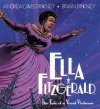 Ella Fitzgerald: The Tale of a Vocal Virtuoso by Andrea Pinkney and Brian Pinkney. An entertaining introduction to Ella Fitzgerald. Narrated by a fictional cat, Scat Cat Monroe, Ella Fitzgerald: The Tale of a Vocal Virtuoso tells the tale of Ella’s initial efforts to become a professional dancer and ultimate success as a jazz vocalist. Ages 5+
Ella Fitzgerald: The Tale of a Vocal Virtuoso by Andrea Pinkney and Brian Pinkney. An entertaining introduction to Ella Fitzgerald. Narrated by a fictional cat, Scat Cat Monroe, Ella Fitzgerald: The Tale of a Vocal Virtuoso tells the tale of Ella’s initial efforts to become a professional dancer and ultimate success as a jazz vocalist. Ages 5+ Duke Ellington: The Piano Prince and His Orchestra by Andrea Pinkney and Brian Pinkney. Another superb biography by wife and husband, Andrea and Brian Pinkney.Duke Ellington: The Piano Prince and His Orchestra tells the tale of Duke Ellington’s career, from his early rejection of the piano to his success as a band leader, pianist and composer. Ages 5+
Duke Ellington: The Piano Prince and His Orchestra by Andrea Pinkney and Brian Pinkney. Another superb biography by wife and husband, Andrea and Brian Pinkney.Duke Ellington: The Piano Prince and His Orchestra tells the tale of Duke Ellington’s career, from his early rejection of the piano to his success as a band leader, pianist and composer. Ages 5+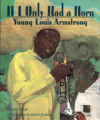 If I Only Had a Horn: Young Louis Armstrong by Roxanne Orgill and Leonard Jenkins. Describes how a very young Louis Armstrong first came to play the trumpet. Includes a scene where Louis shoots a gun in the air to celebrate New Years Eve and is sent to jail. Ages 6+
If I Only Had a Horn: Young Louis Armstrong by Roxanne Orgill and Leonard Jenkins. Describes how a very young Louis Armstrong first came to play the trumpet. Includes a scene where Louis shoots a gun in the air to celebrate New Years Eve and is sent to jail. Ages 6+
May 16, 2011

EnlargeErich Auerbach/Getty Images
This lad looks less than enthused about classical music. (Actually, it's a very young Nigel Kennedy, captured by a cameraman in 1964.)
It was early afternoon on a sunny Saturday. We were stuck in the car in heavy traffic. All three of us were bored and restless. All snacks had already been consumed and endless rounds of 20 Questions had already been played. We'd forgotten our iPods and our phones were running low on batteries. We were nowhere close to our destination.
"Are we there yet?" came a cry from the backseat at closer and closer intervals. In desperation, my husband fiddled with the car radio, and chanced upon the gleaming chords of Das Rheingold. Ah, the Metropolitan Opera broadcast and then, something that stunned us: glorious silence from the peanut gallery. Had we hit upon something that would stave off the impending meltdown?
"What's this about?" finally came the querulous three-year-old's voice. Sensing the possibility of a small reprieve, my brave spouse launched into a more than lightly edited précis of Wagner's firstRing opera: a dwarf, a golden ring, three lovely river sprites, a kingdom full of interesting gods and goddesses.
"I wanna go see it!" she cried. When we gently told her that she might not like the entire story, and that it takes hours and hours and hours anyway, she promptly burst into genuine tears. She was burning to go to the opera and witness this story about the magical ring and all the people who wanted to own it. As adultRing-lovers, our associations with this music might revolve around Wagner's artistic genius, or, more grimly, about the composer's repellent anti-Jewish writings. For our preschooler, the Ring sounded like a wonderful addition to her greatly beloved stable of princess stories. (Cinderella, Snow White, Brünnhilde ... )
Admittedly, the Ring isn't quite appropriate for a less-than-mature audience, what with its murders and incest and whatnot. But that episode in our car spurred me to thinking about how kids encounter classical music, and how we adults shape those early encounters, whether it's just via what music we have playing in our homes or how we introduce classical music and opera in more formal settings.
We've invited some notable artists, including soprano Christine Brewer, pianists Leif Ove Andsnes and Orli Shaham and conductor Marin Alsop to weigh in on this topic this week. But we're also eager to hear your thoughts and experiences, and to have your voice as part of our conversation.
A few of my own observations as a parent and as a music lover:
- Talking down to kids about music never works, just as it doesn't work in any other subject matter. Children can smell disingenuousness at a thousand paces. Moreover, there's no reason to gate kids only to "music for children." Yes, Peter and the Wolf is wonderful, but it's not the endpoint of the journey.
- I have yet to meet a small child who turns away from new music, even the supposedly "thorniest" — there are no preconceptions about what music is "supposed" to be, which is very freeing. Kids don't sniff at abstract or modern visual art, and they don't turn up their noses at abstract music, either.
- Forget that "baby brain" business — that classical music should be listened to because it will help get your kid into Harvard. Not only do scientists say that it's not true (though many companies have made a lot of money pushing the idea), but it's not a good reason anyway. What's the matter with listening to music purely for enjoyment? On the other hand, a few great things came out of that kind of marketing, like a segment from HBO's "Classical Baby" series that marries a Miro painting to music by Bach. (You can check it out below.)
- Smaller fry have yet to absorb the (false) notion that classical music is stuffy, snobby, or boring. It's just sound, as far as they're concerned. If they can dance to it, all the better.
- Exposure to classical music shouldn't be doled out in strictly educational, "eat-your-broccoli-because-it's-good-for-you" doses. It can and should be part of the larger flow of life. In my own house, last evening's play list included some of John Coltrane's Impulse sessions, Stravinsky's Wind Symphony, the Kronos Quartet's "Caravan" recording and the Yo Gabba Gabba album "Music Is Awesome." (Yes, it is!)
- Lots of the "traditional" avenues of introducing classical music and opera to children are not necessarily relevant to children today. Sure, there are the amazing Bugs Bunny cartoons like 1949's "The Rabbit of Seville" or "What's Opera, Doc?" (also known as "Kill the Wabbit") from 1957, but they're more than half a century old now, and so are many of the references within these cartoons.
- Some live concert programming for kids is amazingly good. I'm a big fan of the current incarnation of the New York Philharmonic's Young People's Concerts. Last season's walk-through of Magnus Lindberg's Feria should be required listening and viewing for audiences of all ages. (And the DVDs of Leonard Bernstein's Young People's broadcasts are a staple in our home collection.) Some such children-focused programming, though good-intentioned, is honestly pretty awkward and stiff — and, when you get right down to it, deadly dull and earnest to a fault.
- Humor is great. Everyone in our family loves Lemony Snicket and Nathaniel Stookey's The Composer Is Dead, even though many of the jokes fly right over our kid's head. And physical comedy never fails to please; I heard more belly laughs than I've heard in ages at Nathan Gunn's performance as Papageno in a Metropolitan Opera "family" performance of the Julie Taymor-directed Magic Flute.
- The music belongs to children just as much it belongs to "us" — the ones with the years of listening experience, who have already absorbed current conventions of concert-going practice (don't applaud between movements, obey the dress code, etc.), and who might well have had years of formal training. Classical music isn't a museum piece to be looked at and not touched, as it were.
shatalka
Miro meets Bach.
Source: YouTube
9 Books to Introduce Children to Jazz
Jazz music has inspired some wonderful children’s books. The booklist below features great read aloud books, including Charlie Parker Played Be Bop, Ben’s Trumpet, and When Louis Armstrong Taught Me Scat. This booklist also includes autobiographies of five great jazz musicians: Louis Armstrong, Ella Fitzgerald, Duke Ellington, Art Tatum and Charlie Parker. (So far, no one has successfully written a good children’s book about my favorite jazz musician, Billie Holiday.)
For those of you who would enjoy sharing videos of jazz musicians with your children, I have created a YouTube jazz playlist with videos selected to appeal to children. Take a look!
 Charlie Parker Played Be Bop by Chris Raschka. A fun read aloud, with words and rhythm that give kids a sense of be bop: “Charlie Parker played be bop. / Charlie Parker played saxophone. / The music sounded like be bop. / Never leave your cat alone.” Raschka’s wonderful illustrations have movement that matches the words. Ages 0+
Charlie Parker Played Be Bop by Chris Raschka. A fun read aloud, with words and rhythm that give kids a sense of be bop: “Charlie Parker played be bop. / Charlie Parker played saxophone. / The music sounded like be bop. / Never leave your cat alone.” Raschka’s wonderful illustrations have movement that matches the words. Ages 0+ Max Found Two Sticks by Brian Pinkney. Max (not Roach) imitates the sounds he hears in his neighborhood with his sticks. This wonderful, simple story shows kids that music can be found anywhere. Max creates music by pounding out rhythms on his thighs, a bucket, hat boxes, and more. Ages 2+
Max Found Two Sticks by Brian Pinkney. Max (not Roach) imitates the sounds he hears in his neighborhood with his sticks. This wonderful, simple story shows kids that music can be found anywhere. Max creates music by pounding out rhythms on his thighs, a bucket, hat boxes, and more. Ages 2+ Ben’s Trumpet by Rachel Isadora. A sweet story about a young boy Ben who enjoys listening to jazz music and pretending to play the jazz trumpet. Ben frequently stops by the Zig Zag Jazz Club to listen to the musicians practice. One day the jazz trumpeter at the Zig Zag Jazz Club offers Ben encouragement and a special gift. Ages 3+
Ben’s Trumpet by Rachel Isadora. A sweet story about a young boy Ben who enjoys listening to jazz music and pretending to play the jazz trumpet. Ben frequently stops by the Zig Zag Jazz Club to listen to the musicians practice. One day the jazz trumpeter at the Zig Zag Jazz Club offers Ben encouragement and a special gift. Ages 3+ When Louis Armstrong Taught Me Scat by Muriel Harris Weinstein and R. Gregory Christie. A very fun story to introduce kids to Louis Armstrong and to scat. My kids love the silly bubble gum scat rhyme. The bold illustrations and bubble gum scat make this book a wonderful read aloud. Ages 3+
When Louis Armstrong Taught Me Scat by Muriel Harris Weinstein and R. Gregory Christie. A very fun story to introduce kids to Louis Armstrong and to scat. My kids love the silly bubble gum scat rhyme. The bold illustrations and bubble gum scat make this book a wonderful read aloud. Ages 3+ The Jazz Fly by Matthew Gollub and Karen Hanke. I did not appreciate this book until I read it with the accompanying CD. The story together with the CD introduce kids to the sounds various jazz instruments make and to the concept that jazz musicians improvise based on sounds they have heard. Ages 4+
The Jazz Fly by Matthew Gollub and Karen Hanke. I did not appreciate this book until I read it with the accompanying CD. The story together with the CD introduce kids to the sounds various jazz instruments make and to the concept that jazz musicians improvise based on sounds they have heard. Ages 4+ Ella Fitzgerald: The Tale of a Vocal Virtuoso by Andrea Pinkney and Brian Pinkney. An entertaining introduction to Ella Fitzgerald. Narrated by a fictional cat, Scat Cat Monroe, Ella Fitzgerald: The Tale of a Vocal Virtuoso tells the tale of Ella’s initial efforts to become a professional dancer and ultimate success as a jazz vocalist. Ages 5+
Ella Fitzgerald: The Tale of a Vocal Virtuoso by Andrea Pinkney and Brian Pinkney. An entertaining introduction to Ella Fitzgerald. Narrated by a fictional cat, Scat Cat Monroe, Ella Fitzgerald: The Tale of a Vocal Virtuoso tells the tale of Ella’s initial efforts to become a professional dancer and ultimate success as a jazz vocalist. Ages 5+ Duke Ellington: The Piano Prince and His Orchestra by Andrea Pinkney and Brian Pinkney. Another superb biography by wife and husband, Andrea and Brian Pinkney.Duke Ellington: The Piano Prince and His Orchestra tells the tale of Duke Ellington’s career, from his early rejection of the piano to his success as a band leader, pianist and composer. Ages 5+
Duke Ellington: The Piano Prince and His Orchestra by Andrea Pinkney and Brian Pinkney. Another superb biography by wife and husband, Andrea and Brian Pinkney.Duke Ellington: The Piano Prince and His Orchestra tells the tale of Duke Ellington’s career, from his early rejection of the piano to his success as a band leader, pianist and composer. Ages 5+ If I Only Had a Horn: Young Louis Armstrong by Roxanne Orgill and Leonard Jenkins. Describes how a very young Louis Armstrong first came to play the trumpet. Includes a scene where Louis shoots a gun in the air to celebrate New Years Eve and is sent to jail. Ages 6+
If I Only Had a Horn: Young Louis Armstrong by Roxanne Orgill and Leonard Jenkins. Describes how a very young Louis Armstrong first came to play the trumpet. Includes a scene where Louis shoots a gun in the air to celebrate New Years Eve and is sent to jail. Ages 6+